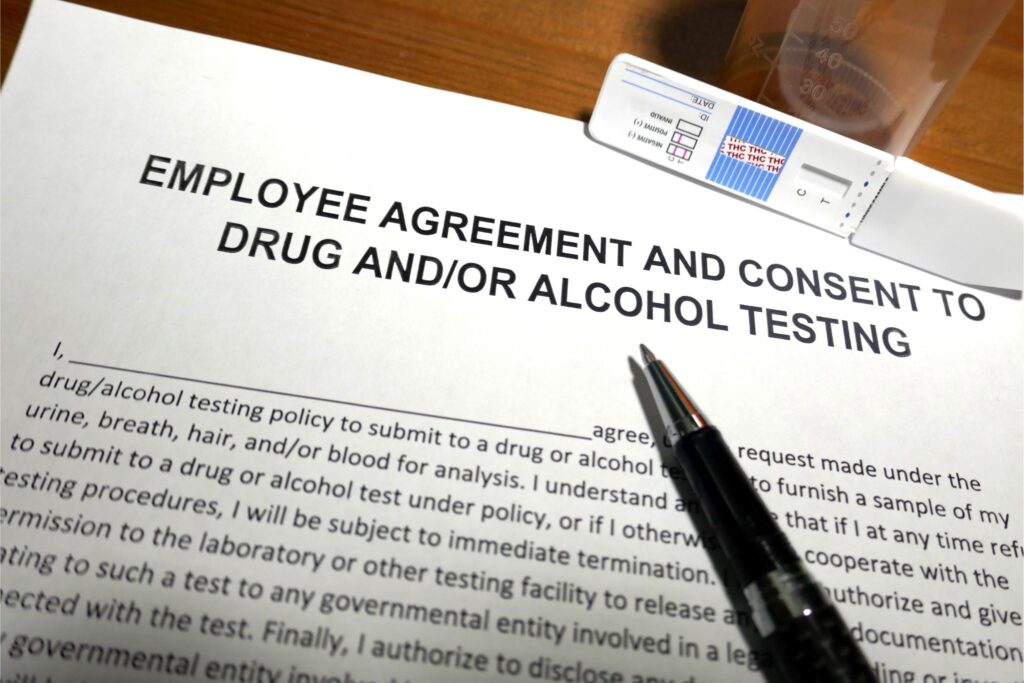
As marijuana legalization continues to evolve, commercial printers and other employers in our industry face unique challenges in crafting effective policies and maintaining a safe and productive work environment—amidst a continuing worker shortage. While the use of marijuana is still illegal at the federal level, many states have decriminalized or legalized its use for medical or recreational purposes.
Commercial print, graphic, and packaging manufacturers are safety-sensitive industries, historically concerned with maintaining a drug-free workplace to ensure the safety of their employees and the public. However, employers must also respect the rights of employees using marijuana legally under state law. It’s complex, to say the least.
Craft clear and comprehensive workplace drug policies
Given the increasing rate of positive employee drug tests in recent years, companies must develop comprehensive workplace drug policies that reflect the organization’s commitment to safety, even while alienating potential workers. Policies should clearly state the company’s position on marijuana use on and off the job and the consequences for violating these rules.
The Wall Street Journal reported, “Data from Quest Diagnostics, one of the country’s largest drug-testing laboratories, shows a rise in worker marijuana use, too. Among the six million general workforce tests it conducted for marijuana last year, 4.3% came back positive, the highest rate in nearly three decades. In drug tests given to workers after accidents on the job, marijuana-positive test rates have tripled over the past decade, according to Quest.”
Many companies no longer include THC in their drug screening, opening the door for more viable candidates. Alternatively, some ask employees to sign off on their drug policy. The policy may include language that states alcohol and marijuana are treated similarly, but on-the-job use is not allowed. It also allows an employer to test if they suspect a worker is under the influence or when an accident occurs.
Consider the following elements when crafting your policies:
On-the-job use. Clearly state that the use of marijuana during work hours or while operating company machinery is strictly prohibited.
Off-duty use. Outline the company’s stance on marijuana use outside of work hours, especially if it might impair job performance or violate federal regulations.
Pre-employment testing. Specify whether the company conducts pre-employment drug testing and which substances will be screened.
Random testing. If random drug testing is conducted, communicate the frequency and how employees will be selected. For example, determine whether employees will be tested randomly or whether testing will be based on observation of certain behaviors.
Post-injury testing. Semper requires any workers who seek emergency or urgent medical care for a job-related injury to undergo a drug and/or alcohol test while at the clinic as per OSHA guidance and in legal accordance within a jurisdiction.
Rehabilitation programs. You might consider offering support to employees who voluntarily seek help for substance abuse issues. This offering may not be required, but it may help with hiring and staffing during this stressful time of worker shortages.
Check out this ready-to-adapt policy from SHRM!
Partner with a specialty staffing agency to ease the confusion
Recruitment and placement agencies are valuable allies for managers adapting to this new space. A specialty agency like Semper will have experience navigating employment regulations in multiple states and can help identify candidates who align with the company’s policies and values. Press operators and warehouse staff must be carefully vetted because they work with or around heavy machinery. Impairment on the job could lead to a costly accident, injury, or worse.
Pre-screening candidates. Semper conducts thorough pre-employment screenings, which can include drug testing for clients that require it, to identify candidates who meet the company’s drug-free requirements and overall fit.
Clear substance use policies already in place. Semper prohibits all employees from reporting to work under the influence of alcohol, illegal drugs, or controlled substances. Semper also prohibits their use by an employee during the workday or anywhere at any location where the employee is working.
Flexibility in hiring. Perhaps most importantly, we provide temporary and flexible staffing solutions, allowing companies to assess a candidate’s performance before making long-term commitments. You may never have to drug test if the worker provides no cause during their trial period.
Consider training and education
Effective communication is crucial to the success of any policy implementation. Leaders should ensure that all employees, including supervisors, are educated about the company’s drug policies. They should understand the reasons behind them and the potential consequences of non-compliance.
Training sessions should also emphasize the importance of safety in the workplace and how marijuana use can impair performance and jeopardize the well-being of the entire team. From pre-screening concerns to post-accident testing, It’s important to emphasize that if on-the-job use or injuries rise, substance screening could expand again.
As marijuana laws continue to evolve, managers in the graphic communications industry—marketing, pre-media, print and packaging, visual media production, bindery, and finishing—must adapt their strategies to the changing landscape of marijuana legalization, use, and testing within this tight labor market. Companies can promote safety while complying with state and federal laws by understanding the legal implications, crafting clear policies, partnering with staffing agencies, and providing education and training.
A well-informed and proactive approach will ultimately contribute to a productive workplace that entices employees to stay.